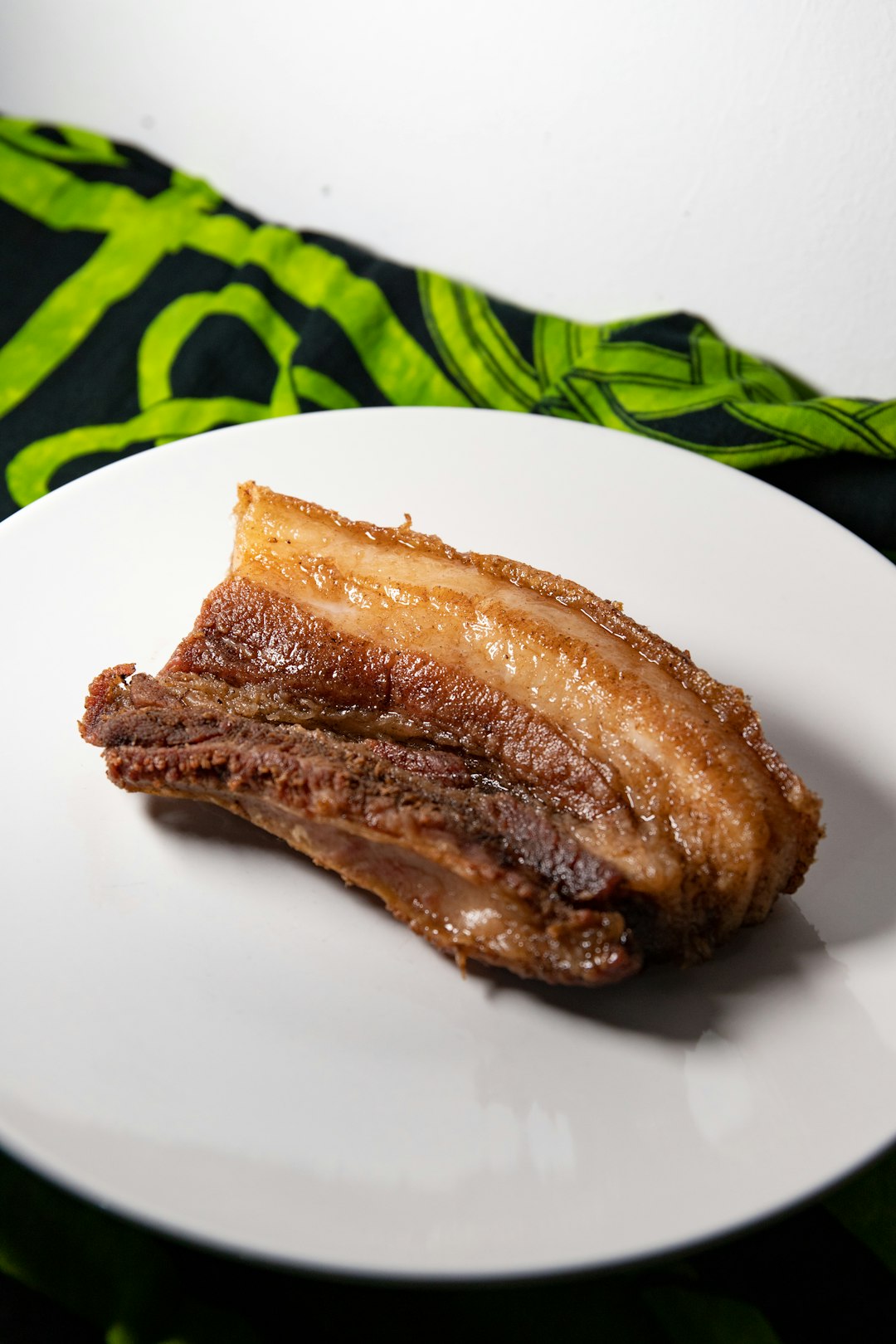Lechon kawali
This dish is prepared by cooking a seasoned pork belly in boiling water until it reaches tender perfection. Once the pork has cooked to perfection, it is then cut into cubes and deep-fried in hot oil until it becomes wonderfully crispy and golden-brown. When it is ready to be served, it is garnished with lemon wedges or a sweet and tart pickled papaya relish.
I find that lechon kawali pairs perfectly with steamed white rice as well as a variety of other accompaniments. For example, I have paired it with a zesty onion and garlic relish, which brings out the flavors of the lechon kawali incredibly well. It can also be served alongside a tangy vinegar-based sauce, or even a savory and spicy sauce.
I love to savor the fragrant aromatics of lechon kawali. The savory marinade that is used to season the pork envelops my senses in its savory goodness. When the pork is cooked and crispy, the smell of the meat tantalizes my sense of smell and further enhances the flavor of the pork.
I am sure that lechon kawali will forever hold a place in my heart. Its umami taste and delightful texture are truly beyond compare. Whenever I make the dish, I cannot help but smile as I savor every single bite. Truly, lechon kawali is a masterpiece of Philippine cuisine.
Lechon kawali recipes
Amazing Lechon kawali recipes sourced from the web.
The origin of Lechon kawali
Ah, the delectable lechon kawali. This crispy treats has been tantalizing taste buds since time immemorial (or at least the distant past). Its captivating crunch and succulent flavor has brought joy to people from all corners of the world, but most will argue that its origin can be traced back to the Philippines.
To get to the bottom of the matter, we look to the time of Spanish colonialism in the Philippines. During this period, the Spanish introduced a dish called "lechón Asado", which was essentially an entire pig roasted over a fire. This dish gained immense popularity among the locals, and soon it began to take on various shapes, sizes, and flavors.
Eventually, the lechón Asado was cooked in a kawali, or a large skillet filled with oil. This was an inexpensive alternative to roasting an entire pig, so over time as the dish evolved, so too did the cooking methods. Today, the lechon kawali is prepared by deep-frying the meat, which gives it that signature crunchiness and unique flavor.
On a more sentimental level, the lechon kawali has become something of a cultural artifact in the Philippines. It is a dish enjoyed during celebrations and festivities, bringing families and friends together. In a way, it represents something bigger - a sense of community. Not many dishes can say that.
You can't talk about the lechon kawali without mentioning the unofficial national dish of the Philippines: Adobo. The combination of the two is a match made in heaven; the succulence of the lechon and the savory adobo sauce are truly a culinary experience.
The lechon kawali isn't going away anytime soon. This delightful dish proves that, no matter how much time passes, some things never go out of style.
Types of Lechon kawali
A staple of Filipino cuisine, lechon kawali is a deep-fried pork dish that has long been an integral part of the culture. A savory delight that packs a flavorful punch, lechon kawali - also known as crispy pork belly or simply “lechon” - is a popular dish that can be found throughout the Philippines.
Lechon kawali is most commonly prepared by marinating chunks of pork in a mixture of seasonings and spices. The pork is then boiled until tender before being deep-fried to a golden crisp. As with so many dishes, there is no single definitive way to prepare lechon kawali. Depending on the region, cooks may choose to incorporate additional ingredients such as garlic, vinegar, soy sauce, fish sauce, bay leaves, peppercorns, and more.
There are two main types of lechon kawali: the classic version and the smoky garlic variant. The classic version is a straightforward preparation that relies on the simplicity of the core ingredients. This type of lechon kawali has a crunchy texture and a robust flavor that comes from the rich marinade. Meanwhile, the smoky garlic version adds a variation to the classic recipe by incorporating whole cloves of garlic and smoked paprika. The result is a smoky, garlicky flavor that rounds out the lechon kawali perfectly.
When it comes to serving lechon kawali, sides are essential. A dish of white rice and a tangy dipping sauce are commonly eaten alongside the pork, though some may prefer to add a variety of salads or vegetables. Of course, creative interpretations of lechon kawali are always encouraged - including stir-fries, pastas, and other dishes that incorporate this classic staple. Ultimately, there are countless ways to enjoy lechon kawali, allowing Filipino culture to be celebrated in all its flavorful glory.



